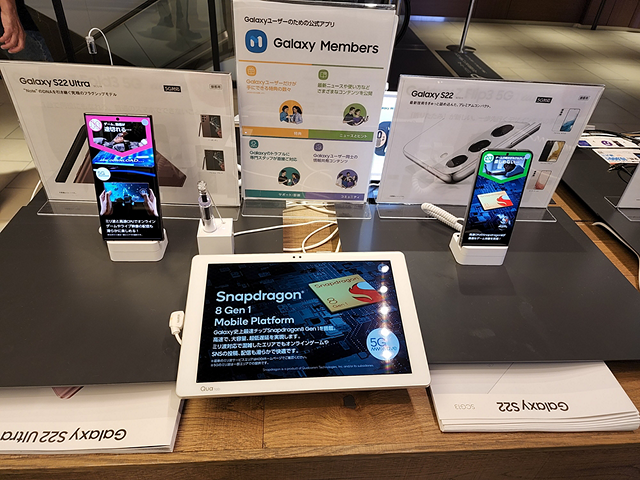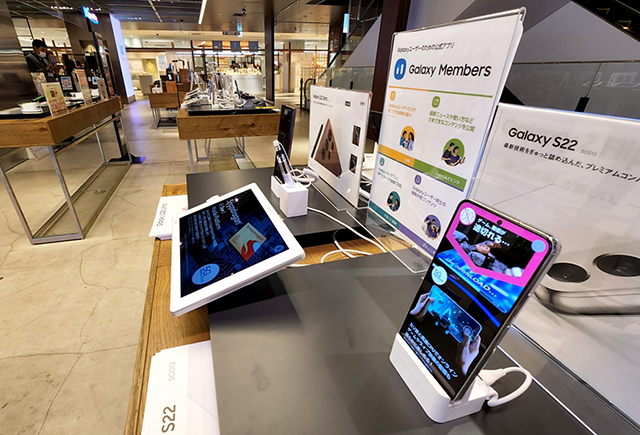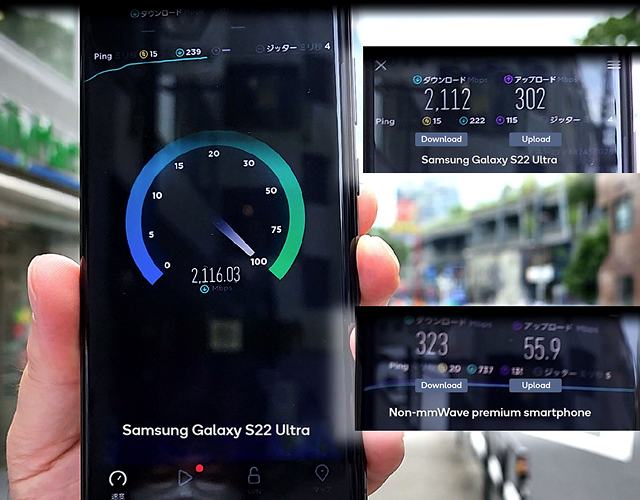As the wireless innovation platform of the decade, 5G is designed to create new experiences, transform industries, and enrich lives. The key to delivering its full potential rests on an extreme network capacity made possible by millimeter wave (mmWave) – which refers to higher spectrum bands in the range of 24 GHz and higher.
Several countries are already benefiting from 5G mmWave’s multi-Gbps speeds for enhanced mobile broadband. As soon as travel restrictions opened up in Japan, I took the opportunity to visit and experience 5G mmWave first-hand. Teaming up with Qualcomm Japan GK’s VP & President Junko Sunaga (Junko-san), we reviewed the country’s wireless upgrade with some of our technology partners and customers. Junko-san and her team walked me through several hot zones in Tokyo — congested areas where mmWave has been deployed to support high data traffic. Here is a recap of our first-hand experiences and insights.
All four major mobile operators in Japan have launched 5G mmWave
We’re excited to see the rapid pace of 5G mmWave deployments and how it’s expanding the device ecosystem in Japan. It is notable that among the country’s four major carriers — NTT Docomo, KDDI, Softbank, and Rakuten — more than 20,000 mmWave gNodeBs have already been deployed, with additional commitments to the Japan Ministry of Internal Affairs and Communications planned for deployment by early 2024.
Some of the hot spots we explored included Harajuku, Shinjuku, and the Tokyo train station — and we were pleased to receive 5G mmWave on our smartphones in various locations, both outdoors and indoors. Keep reading for impressive performance results below.
Japanese consumers choose from a robust selection of 5G mmWave devices
In addition to strong carrier momentum for mmWave, Japanese consumers are now enjoying a robust selection of mmWave devices including premium smartphones from Samsung, Sony, Sharp, Fujitsu, and Google. In the next few months, we expect more OEMs to launch mmWave smartphones in Japan, including those in lower tiers. I had the pleasure of trying out the Samsung Galaxy S22, and testing the mmWave experience around Tokyo.


Unprecedented upload, download speeds at the network’s edge
We ran some basic speed tests to check 5G mmWave performance on some of Harajuku and Shinjuku’s commercial networks. The performance difference compared to a non-mmWave (sub-6 GHz) premium smartphone was particularly notable – and impressive.
In most locations, we observed more than 2 Gbps download speeds, and greater than 300 Mbps upload speeds. Typically, this was over six times (download) and five times (upload) faster than a premium non-mmWave smartphone at the same location on the same network. On our 5G mmWave Samsung Galaxy S22 Ultra, we were able to upload a 55 MB video to TikTok in less than two seconds.
We were thrilled to observe mmWave making possible 5G data speeds that were unprecedented in Japan, thanks to massive capacity enabled by 400 MHz of mmWave spectrum (band n257). For dense urban and suburban areas common in Japan, such capacity expansion with mmWave deployed in the right locations can help improve user experience in congested areas such as train stations used by daily commuters and shopping areas, both indoor and outdoor.
“We were able to upload a 55 MB video to TikTok in less than two seconds.”

While it is good to perform some random testing as an average subscriber would, far more scientifically conducted tests are available from dedicated technicians in the industry. Incidentally, Signals Research Group visited Japan earlier this year and measured 5G mmWave performance in Tokyo. Take a look at the full report here.
Consistent quality of experience with mmWave-sub6 dual connectivity (NR-DC)
With the 20,000+ mmWave nodes already deployed, Japanese carriers are off to a remarkable start delivering extreme subscriber capacity. With additional enhancements such as mmWave-sub6 dual connectivity (NR-DC) expected to rollout across the country this summer, carriers could soon be able to achieve a consistent quality of experience across uncongested and congested areas. This means carriers will be able to take advantage of sub-6 GHz bands (mid-band) for wide-area macro deployments and augment the network with mmWave capacity in congested areas even more.
Businesses not participating in mmWave in Japan are missing a historic opportunity
It’s clear that all key indicators of a robust mmWave ecosystem are actively in play in Japan. We are thrilled to see:
- Support for 5G mmWave by all four major carriers
- An impressive selection of mmWave smartphones from Samsung, Sony, Sharp, Fujitsu and Google, with more to come
- Strong support for mmWave expansion from government authorities
- Emerging business models for the monetization of mmWave
- Continued mmWave network expansion and quality of experience improvement with mmWave-sub6 dual connectivity (NR-DC)
- Commitment from stakeholders in Japan for realizing the true potential of 5G for its consumers and businesses, as well as laying the foundation for connected intelligent edge leadership
It is a unique moment in history when a new technology as transformative as 5G mmWave takes root in a market. We are witnessing this in Japan today and believe that any business not participating in the mmWave revolution in Japan will be missing out on a unique opportunity in time.











